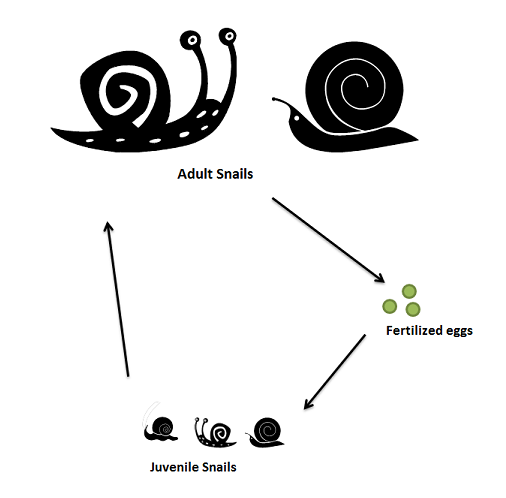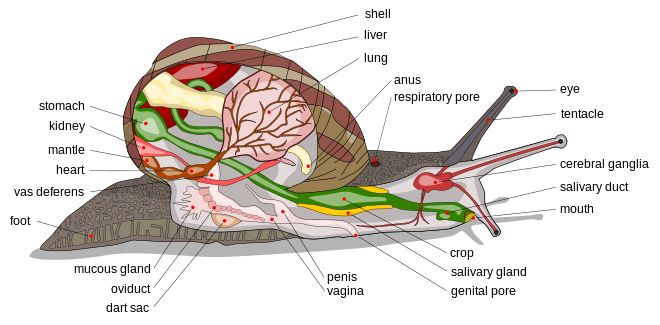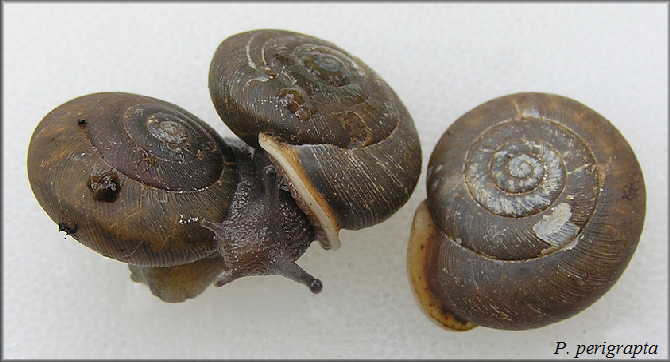Reproduction
Being a member of the subgroup Pulmonata, Patera perigrapta, has a direct life cycle (Hickman, 2012). A direct life cycle is one in which the adult will produce eggs that will result in juvenile offspring that look very similar to the adult; no larvae stages are present (Gillis, 2012). The diagram below depicts the direct lifecycle of Patera perigrapta. The fertilized eggs can be a result of either cross fertilization or self fertilization.
Like many other land snails, Patera perigrapta is hermaphroditic, containing both male and female reproductive organs (Dourson, 2010). The photo below shows the internal anatomy of a snail. Note the female reproductive organs such as the oviduct and vagina, as well as the male reproductive organs like the penis.
The snails can practice self-fertilization, where the animal will contribute it's own sperm and eggs to produce offspring (Hickman, 2012). This is a very common occurrence with land snails because they move so slowly that it is rare to find a mate.
If two snails do cross paths, they often will exhibit courtship behaviors through crawling and touching (Hotopp. 2006), before they practice sexual reproduction. Since both male and female sex parts are present, the two snails will mutually contribute sperm and eggs to complete a process known as cross fertilization (Hickman, 2012). After fertilization, the snail will lay eggs which are coated with a jelly-like layer which feeds and protects the developing snail (Hotopp, 2006.)
Let's learn some Facts!



